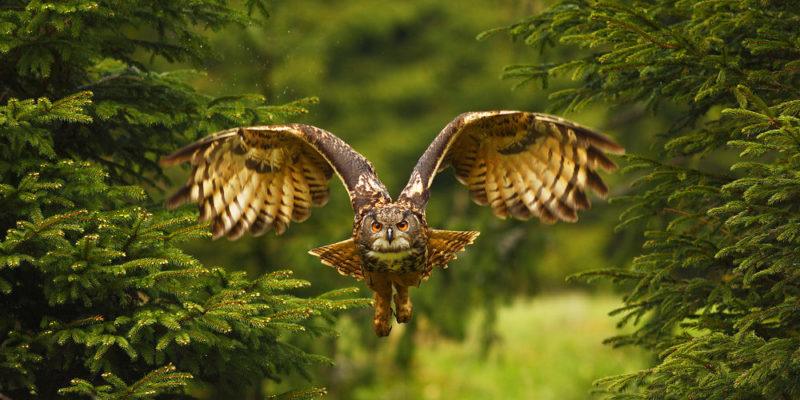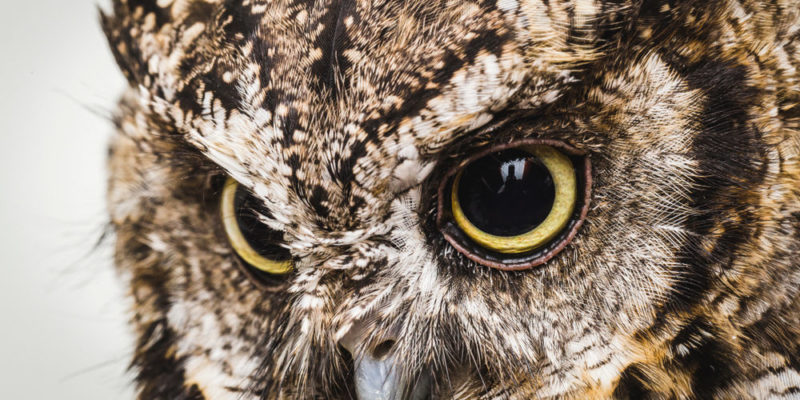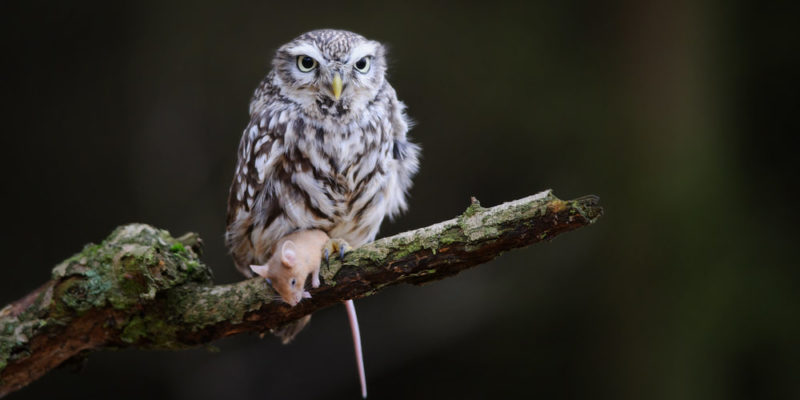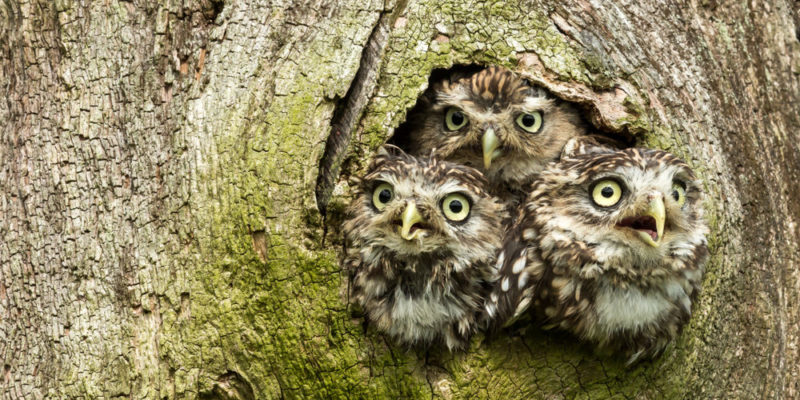The owl is a bird of prey , that is, it chases other animals for food and is not a scavenger. It has nocturnal habits, can stay awake at night, and is characterized by being a loner.
The owl was considered by the Egyptians, Celts and Hindus, among many other cultures , as a symbol of inner wisdom and intuition , a messenger between earthly and spiritual life, and a guardian animal of the underworld.
General characteristics of the owl

Although the owl and the owl are very similar and belong to the same family of birds of prey called strigiformes , they present certain differences, which is why they are divided into two main groups:
- The tytonidae. They correspond to owls that are characterized by being smaller than owls and with lighter or white colored feathers, their face is usually disk-shaped or round.
- The strigidae. They correspond to owls, owls, owls, among others, of large and robust build, with mainly brown plumage and with tufts that look like ears or large protruding eyebrows.
Owl anatomy
 The anatomy of the owl is characterized by:
The anatomy of the owl is characterized by:
- The extensive wings that allow it to fly at high speed. With its wings spread it can grow to a meter and a half.
- The sharp and long claws that allow it to hold its prey while maintaining its flight.
- The differences between male and female, females are usually a little larger than males.
- The three eyelids: two external ones with which she blinks and sleeps respectively, and another internal one with which she cleans herself.
- The eyes that are usually yellow or orange. The owl has no eye mobility, so it must turn its head to see around it.
- The head that can rotate up to 270º due to the distribution of the trachea, esophagus, arteries and veins with respect to the spinal column.
- The tufts of feathers on the sides of the head that look like ears, a feature that differentiates it from owls.
- Heightened sense of hearing and a developed sense of sight that allows you to see even in the dark.
- The pens that are renewed every year. The replacement process is gradual and by sector, and can last up to 3 months.
Owl feeding
 The owl is carnivorous and tends to hunt prey that is smaller or nearly the same size as itself . Due to its developed senses of sight and hearing, it tends to hunt at night.
The owl is carnivorous and tends to hunt prey that is smaller or nearly the same size as itself . Due to its developed senses of sight and hearing, it tends to hunt at night.It mostly feeds on lizards, rabbits, spiders, insects , snails, worms, other birds, and sometimes fish . Once it catches a prey, it does not chew it, but instead rips it open and swallows it directly.
Owl reproduction
 Like all birds, the owl is oviparous and, depending on the species, can lay up to ten eggs , although the most common is that there are three or four. Females can nest throughout the year, but the most intense time is close to spring.
Like all birds, the owl is oviparous and, depending on the species, can lay up to ten eggs , although the most common is that there are three or four. Females can nest throughout the year, but the most intense time is close to spring.The young are cared for by both parents, but during the incubation period the female remains in the nest and the male goes out in search of food. To lay their eggs, they usually take advantage of natural cavities in trees, cliffs or abandoned nests of other birds.
The most characteristic thing about the relationship between owls is that they are capable of being with the same partner for the rest of their lives , although they have to separate at some intervals of time or times of the year that are not ideal for mating.
The above content published at Collaborative Research Group is for informational and educational purposes only and has been developed by referring to reliable sources and recommendations from technology experts. We do not have any contact with official entities nor do we intend to replace the information that they emit.
Veronica is a culture reporter at Collaborative Research Group, where she writes about food, fitness, weird stuff on the internet, and, well, just about anything else. She has also covered technology news and has a penchant for smartphone stories. .
Leave a reply
Your email address will not be published. Required fields are marked *Recent post

Sport: What Is It, Types, Risks, Features, Characteristics and Examples

Dogs: Emergence, Features, Characteristics, Feeding and Breeds

Story: Definition, Elements, Structure, Features and Characteristics

